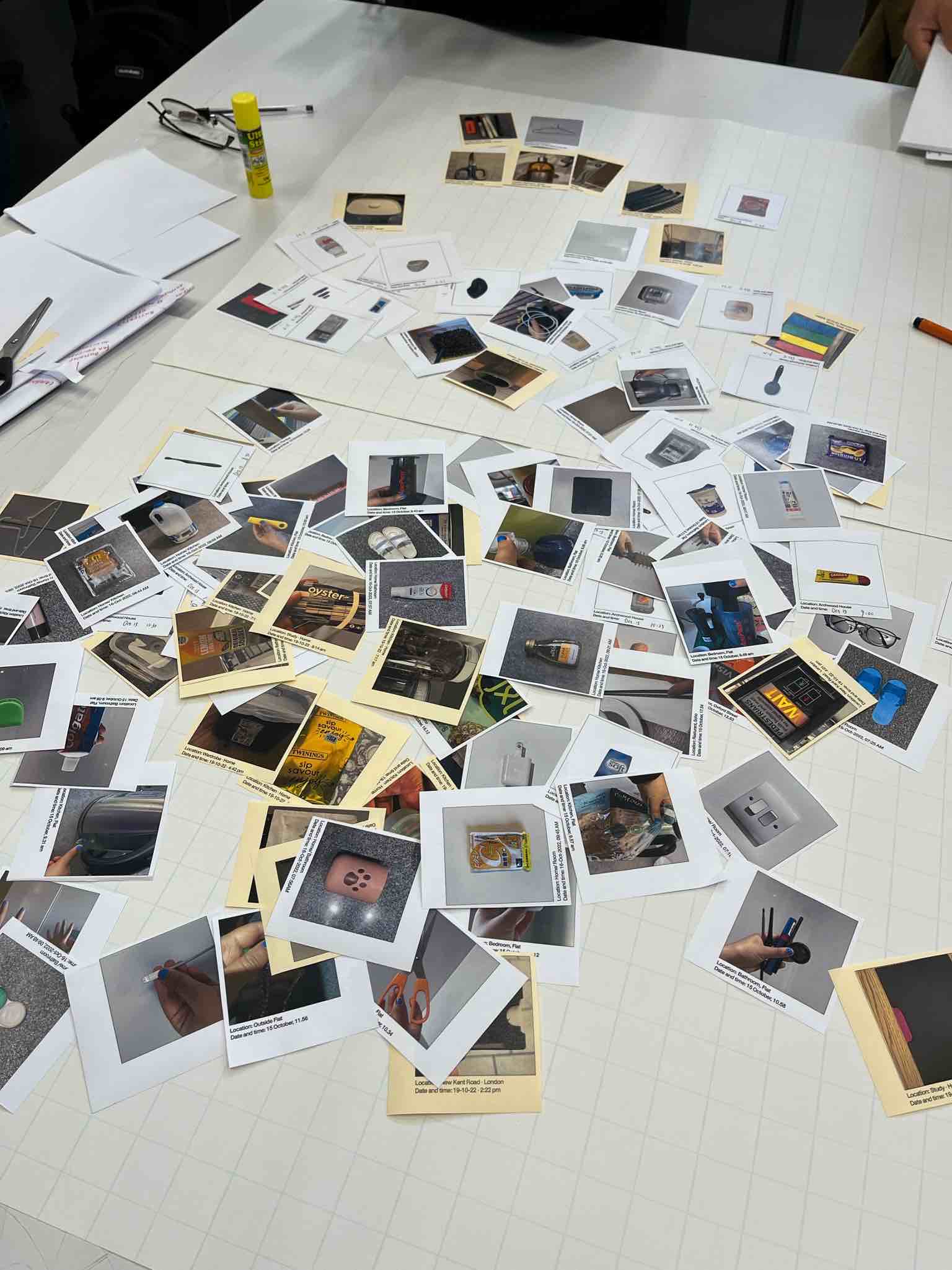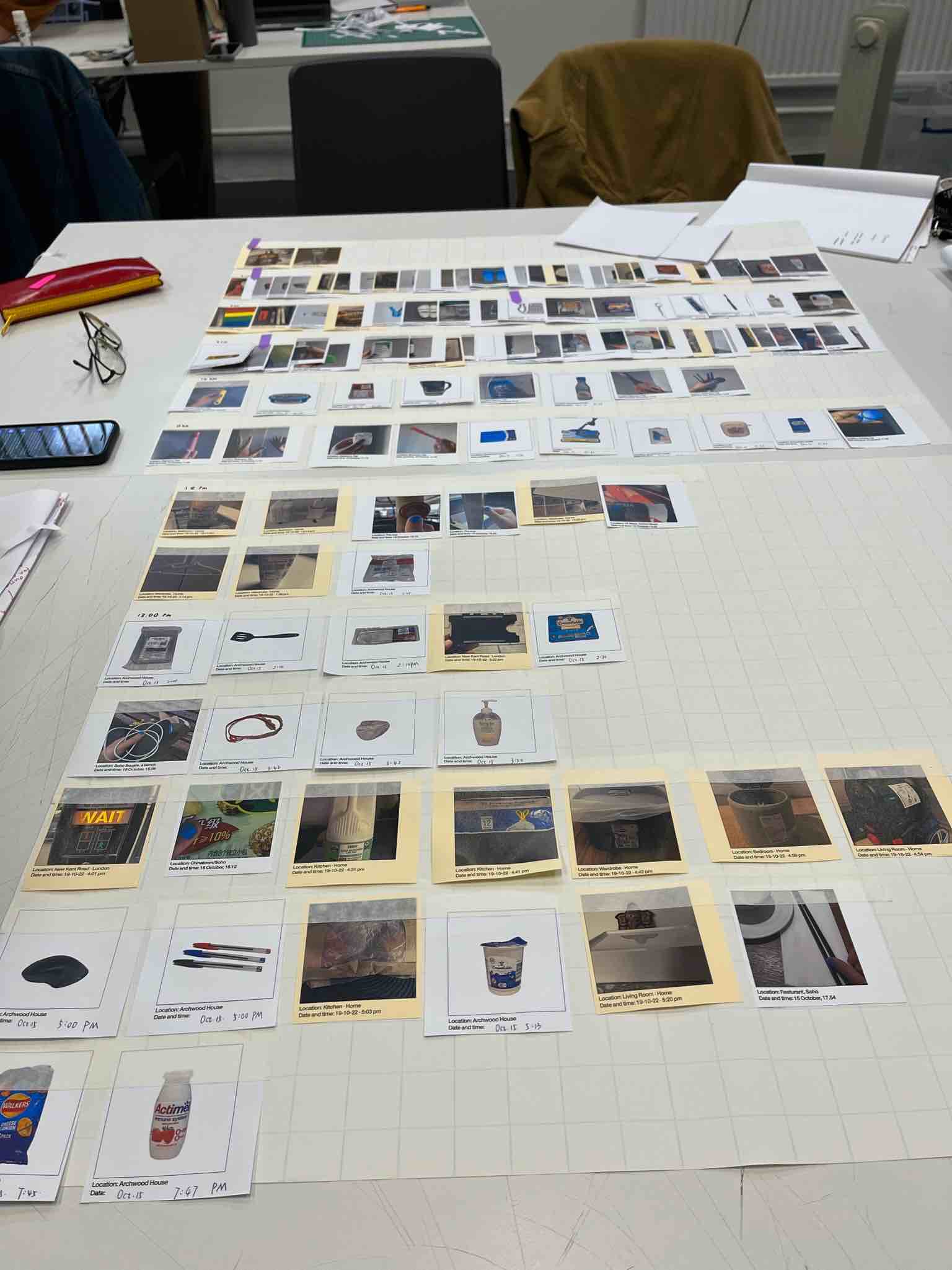Week 03
This week, we continued to look at plastics, this time on a more personal level. I photographed the first 30 pieces of plastic we came into contact within a single day. I couldn’t ignore how plastics were used in almost every aspect of my daily life, in the kitchen, commute, and as packaging material.
I captured my personal interactions with plastic both indoors and outdoors.


We visited this exercise through the lens of Hilla and Bernd Becher’s photographic typologies.

Arranging and organising our images, as well as defining rules for grouping them, enabled us to make new discoveries.
Our group decided to collate all of our photos and arrange them by the hour on the vertical axis and minutes on the horizontal axis. Each of us began collecting data at different days and times of the week. We included markers to annotate the beginning and end points of each person’s timeline to preserve their individual journeys. Additionally, labels were used to distinguish between plastics touched indoors and outside.


We were able to find patterns and compare similarities in our plastic consumption and how that changed based on our individual routines using our visualisation. This technique also prompted us to investigate and analyse our use of single-use plastics.

As part of our key readings, I examined Tufte's viewpoint on what qualifies as good data visualisation and compared it to Giorgia Lupi’s practice and outlook on Data Humanism.
I also attended an interesting discourse on critical thinking as a way of active and skilful conceptualisation. We looked at various reflective models that provide structure for critical thinking
We were introduced to the work of Janine Antoni. Given my background in performance art and design, I am fascinated by Antoni's use of materials and her body to articulate her relationship to the world.
